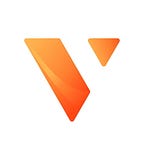Outlook by Sunny King: 2019 has the potential to be transformational
I’ve been out of the public eye for a couple of years but I’ve decided to make a comeback because some critical work should be done for blockchain infrastructures in the next couple of years. Since Peercoin introduced the Proof of Stake Consensus, blockchain applications have exploded and the race has been on to further open up the scalability challenge. Before that happens, blockchain’s real potential is still hampered when competing against established technology such as relational databases.
Blockchain has typically been optimized for its availability and redundancy, but not for ease of use, scalability, or cost-efficiency. As a result, it’s often seen as difficult and exceptional, something that’s costly to create and expand.
As some of you might already know, this situation is something I’ve taken an interest in. I believe in a future where billions of blockchains run together as basic infrastructures for businesses, economies — and perhaps even society itself. In fact, I think that blockchain should do more for society. Everyone should have access to blockchains that they can use and adapt for numerous diverse applications.
But you shouldn’t have to be an expert in technology to create a blockchain. If we can build efficient and stable blockchains that are inexpensive to create and operate, they can be used to host decentralized databases and applications which in turn can drive all manner of businesses and societal functions.
Bitcoin’s breakthrough in decentralization is well-known. It is designed with extreme redundancy. This redundancy provides for decentralization as well as high availability, but it limits its scalability function. Historically, the Bitcoin developers decided to restrict the Bitcoin blockchain’s use as a data store by strictly limiting data usage.
With the introduction of the Proof-of-Stake Consensus in 2012, it is much more practical to scale out blockchain technology. Since then, thousands of independent blockchain projects have been created. As expected, Proof-of-Stake Consensus has since gradually gained popularity over Proof-of-Work Consensus.
To further open blockchain technology up to a far wider range of uses it is better to re-architect the technology behind it. This can be done by treating blockchain like a database. Many systems we use in our daily lives are built on databases — like our bank accounts, online shopping portals, and the apps on our phones and tablets. Decentralized databases are even more flexible and resilient, and open up all sorts of new and exciting business models.
Translating the centralized database model to the blockchain may not be complicated: traditional database user accounts can be substituted by public-private keys and addresses in blockchains. Traditional databases’ strong access control, centralized account creation, and administration can be replicated inside client/node software. Privacy is protected by the system’s inherent anonymity, while customer identification can be effected as an account-opening requirement recorded on a whitelist.
Another area that I believe we’ll see develop and mature over 2019 is the establishment of effective sidechains. These are a critical element to the mass adoption of blockchain because they extend functionality and improve scalability. By running in parallel to a mainchain, they enable specialty activities to take place without involving the whole blockchain.
Moreover, sidechains may need to be order-preserving, operating in synchronization with the mainchain so that global events continue to be ordered correctly in time. In my view, two-way pegging is not a required feature for sidechains. There may be other interesting models that allow sidechains to work more naturally with the mainchain. This is certainly an area still wide open for more innovations.
All of this needs to be made as user-friendly as possible. In my vision of the future of blockchain technology, a modular system with cloud tools will form a simple, swift, and secure blockchain development platform. Templates will enable users to choose protocol parameters and pluggable components to set up blockchains for specific applications quickly and cost-effectively.
I’ve been encouraged by how close we’re getting to achieving this vision and I view 2018 as a foundation year. Great progress has been made in many quarters towards achieving the goal of a truly effective blockchain, including by our own project, V SYSTEMS. But I believe that 2019 has the potential to be transformational. This is why I’ll be taking a more active role in the industry over the next twelve months. Let’s all make a wish that 2019 is the year we work even harder together to help blockchain technology transform and achieve its real potential.
